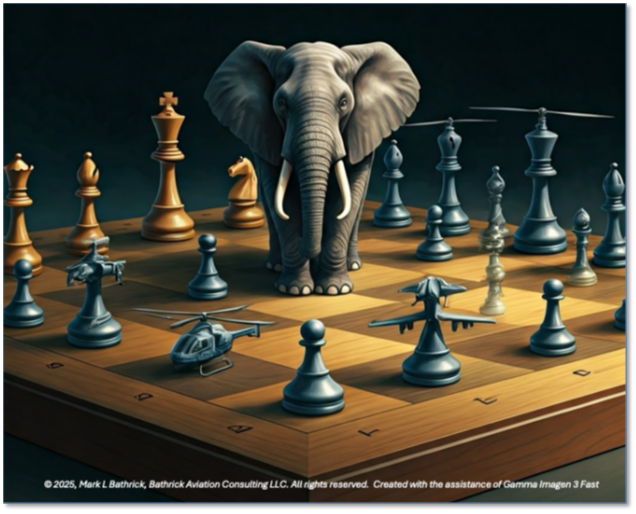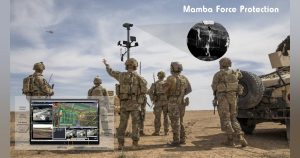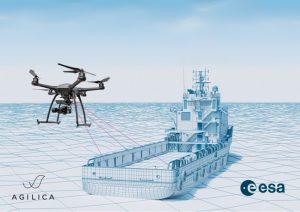The Elephant in the Airspace: Why Outdated Approaches Threaten America’s Aviation Leadership
America, historically a leader in aviation innovation, now stands at a crucial turning point. The issue isn’t a lack of bold ideas—U.S. companies are vibrant with visions for advanced air mobility (AAM), drones, and AI-driven aircraft. The real hindrance is an outdated aviation regulatory system, described as the “elephant in the airspace,” which threatens both America’s safety record and global leadership in aviation.
This article explores the challenges faced by this antiquated framework, its impact on industries and the general public, and what needs to change. Let’s take a closer look, interspersed with an understanding human perspective and a touch of aviation humor.
How We Got Here: The Legacy of “See-and-Avoid”
The evolution of the U.S. airspace system occurred during the golden era of aviation, wherein pilots utilized “see-and-avoid” as the primary safety measure. Although this human-centric framework functioned well for traditional manned aircraft operations, new advancements demand a pivot:
- Drones are often too small and fast to be reliably detected by human pilots.
- Urban air taxis and autonomous planes frequently operate without an onboard pilot.
- AI and sensors have advanced beyond the capabilities of human observation and radio communication.
Nonetheless, the major FAA guidelines continue to emphasize human visual procedures, forcing state-of-the-art technology to adapt to regulations designed for a bygone era. It’s like managing electric scooters with the regulations of horse-drawn carriages.
The Cost of Standing Still
1. Safety Risks Multiply
Recent incidents, such as the midair collision between an Army helicopter and a commercial airliner on January 19, 2025, illustrate the dangers of regulatory stagnation. According to experts, over 100 FAA air traffic control systems face critical failures, threatening operational efficiency and safety.
2. Economic Leadership at Stake
America’s traditional dominance was built on its robust aviation systems and ambition. Now, outdated regulations hamper the commercial drone market, package delivery, and urban air mobility, causing significant financial loss and allowing other countries to forge ahead.
3. Frustration for Innovators
Business leaders encounter a painfully slow regulatory environment, which resists integrating safety measures refined over years of commercial drone trials. Consequently, groundbreaking ideas often remain stalled in pilot phases, unable to achieve national scaling.
What’s Holding Us Back? The Outdated Paradigm
1. Human-Centric Bias
Regulatory systems continue to prioritize humans as the primary safety contributors in airspace control. Yet, with tens of thousands of commercial drone flights, there is compelling data showing that electronic systems can surpass visual protocols effectively.
2. Technology Crammed into Old Boxes
Instead of creating rules tuned for current technological realities, the approach has been to fit cutting-edge tech within frameworks that were originally crafted for an era that scarcely imagined commercial jets, let alone drones and AI pilots.
3. Infrastructure That’s Falling Apart
A 2024 Government Accountability Office report highlights that over a third of FAA air traffic control systems are now outdated, posing substantial risks to safety and innovation.
4. Budgetary and Political Roadblocks
Budget constraints and political upheaval further impede the FAA’s ability to navigate new challenges decisively, whereas other nations are embracing state-supported drone airways and smart airspace transformations.
What Does the Future Demand?
1. Electronic Conspicuity for All
The call from the industry is clear: evolve from “see-and-avoid” to universal electronic conspicuity. This requires that all air vehicles, both manned and unmanned, digitally broadcast their location, reducing collision risks and unlocking drones and AAM’s full potential.
2. Real Regulatory Modernization
A cultural shift from “business as usual” is pivotal. Regulation should be rewritten to accommodate the needs of automation, robotics, and AI.
3. Investment in NextGen Airspace
The FAA’s NextGen Air Transportation System is designed to utilize digital networks and satellite data for managing congested skies, yet it suffers from delays and funding issues. A resolute commitment to such endeavors is crucial for maintaining competitiveness.
Real-World Story: When Rules Fall Behind Reality
Consider a Californian drone company ready to deploy emergency medical deliveries post-disaster. Despite proven technology and strong safety data, national regulations impose months-long waits for waivers, potentially rendering such initiatives unviable. Meanwhile, a European rival captures the market share domestically.
Such scenarios are a daily reality for U.S. drone and AAM innovators.
Expert Tips and Lessons
- Embrace Automation: Prioritize digital solutions over human observation for airspace monitoring.
- Advocate for Change: Engage actively with regulators, share operational insights, and promote risk-based safety frameworks.
- Learn from Others: Observe countries like Switzerland, Singapore, and the UK that are fostering adaptable, drone-compatible airspace and benefiting substantially.
- Be Patient, But Persistent: Change is gradual but collective industry efforts can make significant strides.
- Invest in Infrastructure: Participation in pilot projects, public-private partnerships, and local drone corridors can expedite advancements.
Is There Hope? The Path Forward
Bold initiatives are vital for America’s continued leadership in aviation:
- Implement digital position reporting across all aircraft, facilitating secure, scalable drone and urban air mobility operations.
- Commit fully to airspace rejuvenation, moving away from obsolete technology and protocols.
- Revamp regulatory principles to prioritize innovation, with safety derived from empirical data and actual outcomes.
The implications are massive: impacting aviation safety, economic progression, and the opportunity to shape the future of air travel.
Building Trust Through Change: The Human Side
At [Your Company/Brand], we’ve witnessed both the hurdles and triumphs within the industry. Whether it’s collaborating with emergency services to secure drone access during crises or assisting startups through regulatory complexities, our mission is to empower innovation and ensure safe skies for all. We aim to work closely with regulators, train tomorrow’s pilots, and disseminate our expertise generously—just ask our partners from recent disaster relief operations or urban air taxi advancements.
Aviation embodies not only machines but also people, opportunities, and the collective promise of smarter, safer transportation.
Final Thoughts (and a Meme for the Road)
To remain a global aviation leader, America must address the “elephant in the airspace.” While long-standing frameworks may evoke nostalgia, they also threaten to stifle our shared aspirations. As one FAA engineer aptly noted, “Regulations shouldn’t be on autopilot—they should chart a fresh course.”
Let’s clear the skies—together.
“Insanity is doing the same thing over and over again and expecting different results.” —Albert Einstein (and every drone operator stuck in waiver limbo)
Fly smart. Fly safe. Demand the future.













